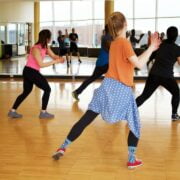
Core Strength 101: Effective Ab Workouts for a Powerful Midsection
Core strength is a fundamental aspect of overall fitness and health. The core muscles, which include the muscles of the abdomen, back, and pelvis, play a crucial role in supporting the spine and pelvis, as well as in stabilizing the body during daily activities and sports. Having a strong core not only improves posture, balance, and stability but also helps prevent injuries and lower back pain.
Key Takeaways
- A strong core is essential for overall fitness and health.
- Benefits of a strong core include improved posture, balance, and stability.
- The core muscles include the rectus abdominis, obliques, and transverse abdominis.
- Effective ab workouts should focus on all areas of the core and incorporate a variety of exercises.
- Planks, Russian twists, bicycle crunches, mountain climbers, and leg raises are all great exercises for strengthening the core.
Benefits of a Strong Core
Having a strong core offers numerous benefits for our overall well-being. One of the most noticeable benefits is improved posture. When our core muscles are strong, they help support the spine and maintain proper alignment, reducing the risk of slouching or hunching over. This can alleviate strain on the neck, shoulders, and lower back.
A strong core also enhances balance and stability. Whether we are walking, running, or participating in sports activities, a stable core allows us to move with control and coordination. This can help prevent falls and improve performance in various physical activities.
Furthermore, a strong core can help prevent injuries. By providing stability to the spine and pelvis, the core muscles protect these areas from excessive strain or impact. This is particularly important for athletes who engage in high-impact sports or activities that involve twisting or sudden movements.
Anatomy of the Core Muscles
To understand how to strengthen our core effectively, it is essential to know the different muscles that make up this area. The core muscles consist of several groups, including the rectus abdominis, obliques, and transverse abdominis.
The rectus abdominis is commonly known as the “six-pack” muscle. It runs vertically along the front of the abdomen and is responsible for flexing the trunk and stabilizing the pelvis.
The obliques are located on the sides of the abdomen and consist of two groups: the external obliques and the internal obliques. The external obliques help rotate and bend the trunk, while the internal obliques assist in rotating and stabilizing the spine.
The transverse abdominis is a deep muscle that wraps around the abdomen like a corset. It plays a crucial role in stabilizing the spine and pelvis, providing support and protection to these areas.
The Fundamentals of Effective Ab Workouts
| Exercise | Repetitions | Sets | Rest Time | Difficulty Level |
|---|---|---|---|---|
| Plank | 30 seconds | 3-4 | 30 seconds | Beginner |
| Crunches | 15-20 | 3-4 | 30 seconds | Beginner |
| Leg Raises | 10-12 | 3-4 | 30 seconds | Intermediate |
| Russian Twist | 10-12 | 3-4 | 30 seconds | Intermediate |
| Mountain Climbers | 30 seconds | 3-4 | 30 seconds | Advanced |
| Flutter Kicks | 30 seconds | 3-4 | 30 seconds | Advanced |
When performing ab workouts, it is important to focus on proper form and technique to avoid injury and maximize results. One of the key aspects of effective ab workouts is proper breathing. It is essential to exhale during the exertion phase of the exercise and inhale during the relaxation phase. This helps engage the core muscles more effectively and prevents unnecessary strain on the body.
Another important aspect is maintaining proper form throughout the exercise. This means keeping the core muscles engaged and avoiding excessive arching or rounding of the back. It is also important to avoid straining the neck or shoulders by keeping them relaxed and in alignment with the rest of the body.
Exercise 1: Plank
The plank is one of the most effective exercises for strengthening the core muscles. To perform a plank correctly, start by getting into a push-up position with your hands directly under your shoulders and your toes on the ground. Engage your core muscles by pulling your belly button towards your spine and keeping your body in a straight line from head to toe.
Hold this position for as long as you can, aiming for at least 30 seconds to start with. As you get stronger, you can increase the duration of the plank or try more challenging variations, such as side planks or plank jacks.
Exercise 2: Russian Twist

The Russian twist is an excellent exercise for targeting the oblique muscles. To perform a Russian twist, sit on the ground with your knees bent and your feet flat on the floor. Lean back slightly, keeping your back straight and your core engaged.
Hold a weight or a medicine ball in front of your chest and twist your torso to one side, touching the weight or ball to the ground. Then, twist to the other side, repeating the movement in a controlled manner. Aim for 10-15 repetitions on each side, gradually increasing the weight or intensity as you get stronger.
Exercise 3: Bicycle Crunches
Bicycle crunches are a great exercise for targeting both the rectus abdominis and oblique muscles. To perform bicycle crunches, lie on your back with your knees bent and your hands behind your head. Lift your shoulders off the ground and bring one knee towards your chest while simultaneously twisting your torso to bring the opposite elbow towards the knee.
Alternate sides in a pedaling motion, keeping your core engaged throughout the movement. Aim for 10-15 repetitions on each side, gradually increasing the number of repetitions as you get stronger.
Exercise 4: Mountain Climbers
Mountain climbers are a dynamic exercise that targets the core muscles while also providing a cardiovascular workout. To perform mountain climbers, start in a push-up position with your hands directly under your shoulders and your toes on the ground.
Engage your core muscles and bring one knee towards your chest, then quickly switch legs, alternating between right and left. Keep a fast pace, as if you were running in place, while maintaining proper form and engaging your core throughout the exercise. Aim for 30-60 seconds of mountain climbers, gradually increasing the duration as you get stronger.
Exercise 5: Leg Raises
Leg raises are an effective exercise for targeting the lower abs. To perform leg raises, lie on your back with your legs straight and your arms by your sides. Engage your core muscles and lift both legs off the ground, keeping them straight.
Lower your legs back down towards the ground, stopping just before they touch the floor, and then lift them back up again. Aim for 10-15 repetitions, gradually increasing the number of repetitions as you get stronger. For an added challenge, you can also try lifting your legs at a 45-degree angle or adding ankle weights.
Incorporating Core Workouts into Your Fitness Routine
Incorporating core workouts into your fitness routine is essential for overall health and wellness. A strong core not only improves posture, balance, and stability but also helps prevent injuries and lower back pain. By performing exercises such as planks, Russian twists, bicycle crunches, mountain climbers, and leg raises, you can effectively strengthen your core muscles and reap the benefits of a strong and stable core.
Remember to focus on proper form and technique during your ab workouts to avoid injury and maximize results. Start with the basic versions of each exercise and gradually increase the intensity or duration as you get stronger. By consistently incorporating core workouts into your fitness routine, you will not only improve your physical performance but also enhance your overall well-being.
FAQs
What is a core workout?
A core workout is a set of exercises that target the muscles in your abdomen, lower back, hips, and pelvis. These muscles work together to provide stability and support for your spine and pelvis.
Why is a strong core important?
A strong core is important for overall health and fitness. It helps improve posture, balance, and stability, which can reduce the risk of injury during physical activity. A strong core can also improve athletic performance and make everyday activities easier.
What are some effective ab workouts for a strong core?
Some effective ab workouts for a strong core include planks, crunches, Russian twists, bicycle crunches, and leg raises. It’s important to vary your workouts and target all areas of your core for maximum results.
How often should I do core workouts?
It’s recommended to do core workouts at least 2-3 times per week. However, it’s important to listen to your body and not overdo it. Rest days are just as important as workout days to allow your muscles to recover.
Can I do core workouts every day?
While it’s possible to do core workouts every day, it’s not recommended. Your muscles need time to recover and grow stronger, and overworking them can lead to injury. It’s important to vary your workouts and give your muscles time to rest and recover.

















